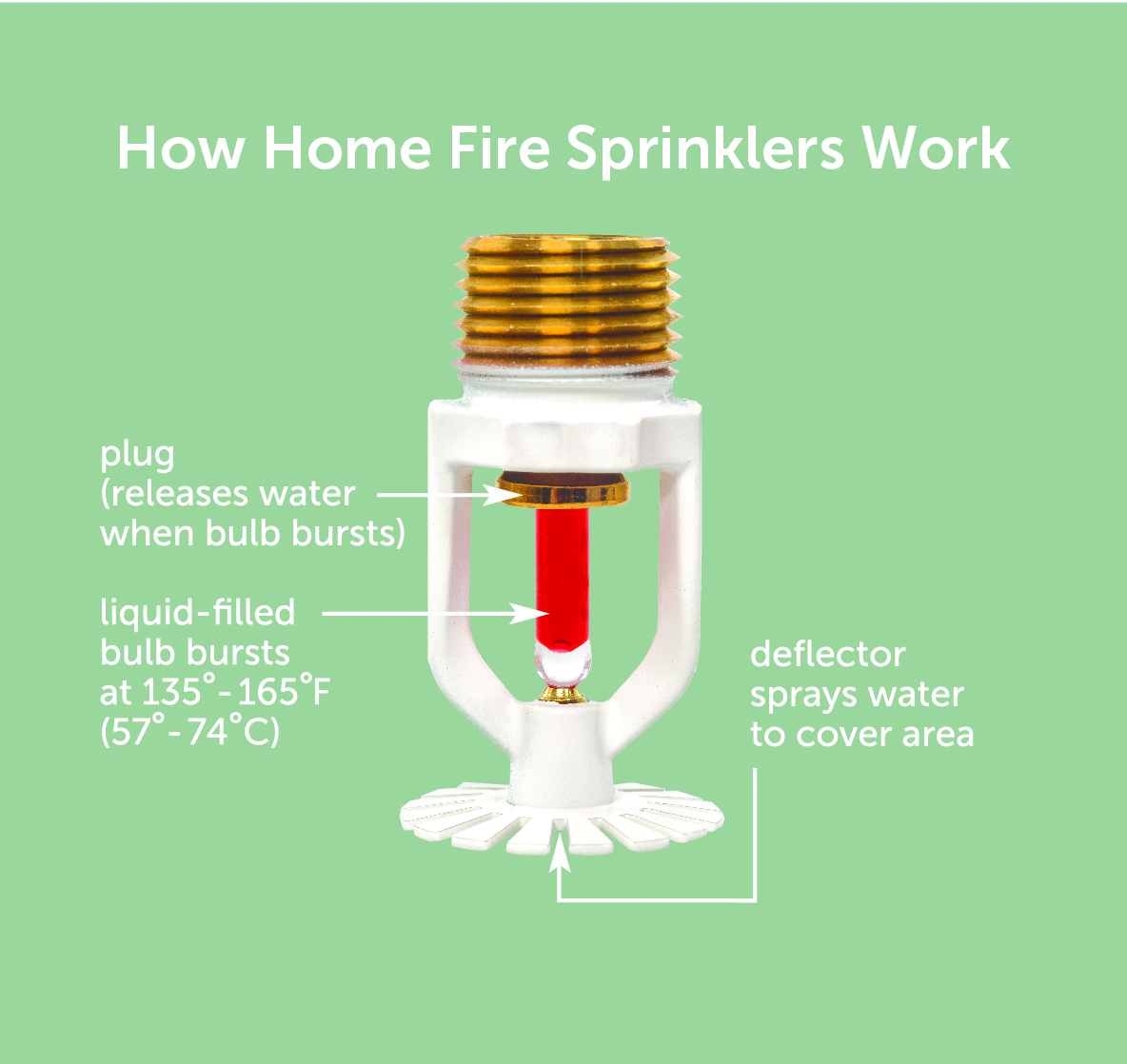Perhaps the greatest hurdle fire service professionals face in increasing the acceptance of home fire sprinklers is the number of myths circulating about them. Some of these are due to the movie and television industry showing the hero escaping a fire because all of the sprinklers activate at once. Other myths are the result of people perpetuating misconceptions like smoke causing the sprinkler to activate. The best means to counter these myths is to understand how home fire sprinklers work so that you can call out the malarkey when you see or hear it.
The first major misconception is when one sprinkler goes off then they all go off. This is not the case with home fire sprinklers. Water in the sprinklers is held back by a fusible link in the sprinkler. Only once that fusible link is exposed to a temperature of 57 C for several seconds will the fusible link break and the sprinkler opens. Only those sprinklers reaching this temperature will activate, and in most home fires, only a single sprinkler is triggered.

A second major misconception is the belief that the volume of water dispersed by home fire sprinklers is greater than the damage caused by a fire. Again, this is simply not true. Sprinklers activate early, suppressing or containing the fire, thus allowing occupants to escape. A fire that is allowed to grow unchecked until the arrival of firefighters will have grown exponentially. A sprinkler flows at 25 US gallons per minute. Firefighters apply water at 250 US gallons per minute, per hose line. Seems like simple math: clean up with a wet vac and be back at home in your bed that night, or clean up with an excavator and spend weeks in a hotel room.
The best way to broaden the acceptance of home fire sprinklers is to squash the misconceptions. The best way to do this is to ensure that fire personnel are knowledgeable about home fire sprinklers and have public education materials on hand (available through Home Fire Sprinkler Coalition Canada). This is why fire departments throughout North America have registered to become Built For Life Fire Departments ®. If your department has not already signed up, consider joining. Check out the resources and information here.
